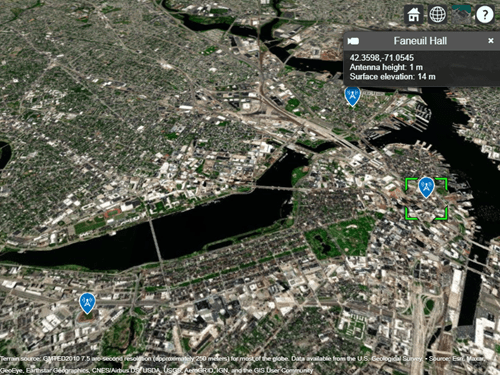rxsite
Create RF receiver site
Description
Use the rxsite object to create a radio frequency receiver
site.
A receiver consists of an RF circuit and an antenna, where the antenna intercepts radio waves and converts them to a current that is decoded by the RF circuit (e.g. demodulated) into a signal. Key characteristics of a receiver include its sensitivity and its antenna radiation pattern.
Creation
Description
rx = rxsite creates a radio frequency receiver site
in geographic coordinates.
rx = rxsite( sets the
coordsys)CoordinateSystem property. By default, receiver sites use a
geographic coordinate system. Create a receiver site that uses a Cartesian
coordinate system by specifying coordsys as
"cartesian".
rx = rxsite(___,
sets properties
using one or more name-value arguments. Name=Value)
For geographic receiver sites, you can specify the location by setting the
Latitude,Longitude, andAntennaHeightproperties.For Cartesian receiver sites, you can specify the location by setting the
AntennaPositionproperty.
Properties
Object Functions
show | Show site in Site Viewer |
hide | Hide site from Site Viewer |
distance | Distance between sites |
angle | Angle between sites |
elevation | Elevation of site |
location | Coordinates at distance and angle from site |
sigstrength | Received signal strength |
los | Display or compute line-of-sight (LOS) visibility status |
link | Display or compute communication link status |
pattern | Display antenna radiation pattern in Site Viewer |
Examples
Version History
Introduced in R2017b

